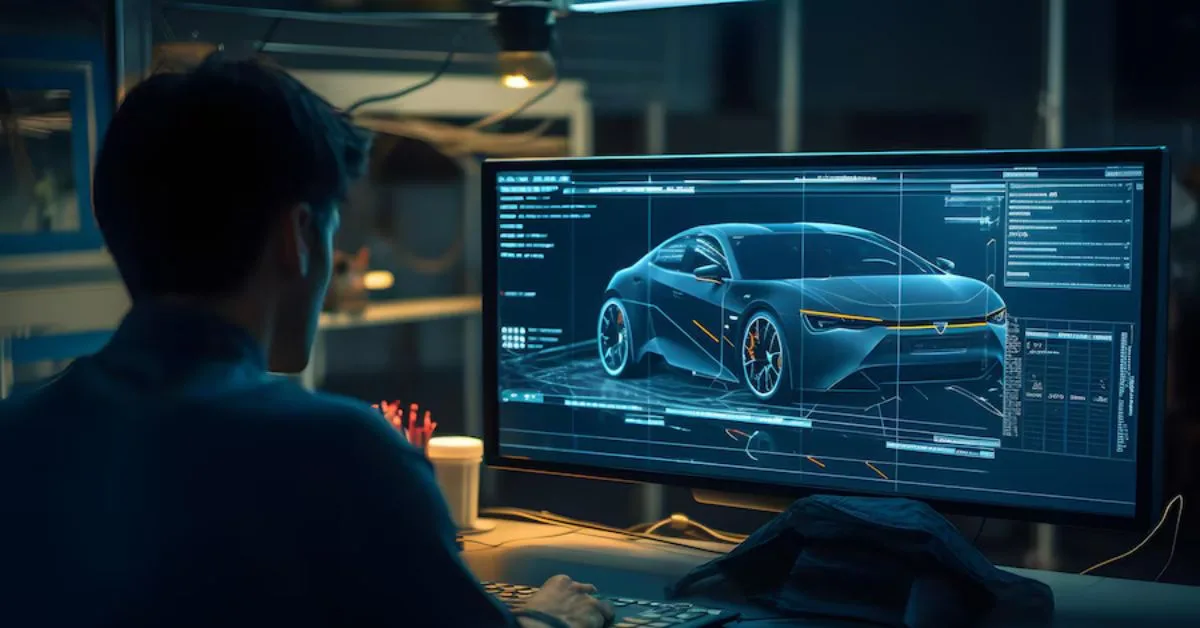Key Takeaways:
- The advent of connected cars increases the need for robust cybersecurity protocols.
- Automotive cybersecurity is essential for protecting against unauthorized access and preserving driver privacy.
- Industry collaboration, global regulations, and consumer education are pivotal to advancing automotive cybersecurity.
Table of Contents:
- The Integration of Cybersecurity in Modern Vehicles
- The Role of Cybersecurity in Protecting Connected Automobiles
- Understanding the Different Layers of Vehicle Cybersecurity
- Collaborative Strategies for Strengthening Automotive Cyber Defense
- The Impact of Cybersecurity on Consumer Confidence in Automotive Technology
- The Future of Automotive Cybersecurity: Trends and Predictions
- Government Regulations and Their Influence on Automotive Cybersecurity
- Best Practices for Automotive Manufacturers Regarding Cybersecurity
- The Risks and Consequences of Cybersecurity Failures in the Automotive Sector
- Educating the Public: Raising Awareness on Automotive Cyber Threats
The Integration of Cybersecurity in Modern Vehicles
The modern vehicle is no longer just a mode of transportation but a hub of integrated technology. Every aspect of the contemporary car relies on digital connectivity, from the in-car entertainment systems to the engine management functions. However, with this evolution comes an array of cybersecurity challenges. Vehicles have become a potential target for hackers, with the risk of unauthorized access threatening driver privacy and functionality. Zero Trust in automotive is not just a buzzword but a necessary framework for ensuring that every request, every connection, and every user is verified before being granted access to the car’s systems.
Automotive cybersecurity is an integral part of the car’s design, embedded in the very fabric of its functionality. Integrating these security measures within the earliest stages of vehicle development is vital. As manufacturers innovate, cybersecurity must evolve side-by-side, forming a shield that flexes with the introduction of new technology and potential vulnerabilities.
Public awareness of this issue is a growing concern, highlighted by recent incidents reported in the media, where vehicle functions were remotely hacked, emphasizing the importance of robust cybersecurity. Recent reports on such instances are a stark reminder of the consequences of weak cybersecurity measures in automobiles.
The Role of Cybersecurity in Protecting Connected Automobiles
Connected and autonomous vehicles symbolize the new frontier of convenience and innovation. However, with their advanced technology comes a significant risk of cyber-attacks. As vehicles increasingly connect to external networks and communicate with each other, the role of cybersecurity in detecting and preventing these intrusions becomes ever more critical. Cybersecurity is tasked with safeguarding the technical systems that manage the vehicles’ operations and the sensitive data that flows in and out of them. With the increasing prevalence of remote vehicle diagnostics, over-the-air updates, and other forms of wireless communications, robust cybersecurity measures are no longer a luxury but a fundamental requirement.
The methodologies employed to protect these connected systems are becoming more sophisticated as the nature of the threats diversifies. A breach in the automotive sector might unravel a single vehicle’s security and potentially jeopardize an entire fleet, highlighting the need for comprehensive protection strategies.
Understanding the Different Layers of Vehicle Cybersecurity
A comprehensive approach to automotive cybersecurity involves protecting several layers of the vehicle ecosystem. The hardware layer consists of physical components such as the Engine Control Unit (ECU), sensors, and onboard computers. Ensuring that these components are tamper-proof and robust against cyber threats is critical. The software layer, which includes the vehicle’s operating system and applications, must be secured with solid encryption and regularly updated to protect against the latest threats. Finally, the network layer, which entails the communication systems enabling vehicle connectivity, requires vigilant monitoring and stringent access controls to prevent unauthorized incursions.
Implementing regular software updates and patches is one of the most crucial aspects of maintaining vehicular cybersecurity. These updates are essential in rectifying vulnerabilities that cybercriminals could exploit, thereby maintaining the integrity of the vehicle’s systems.
Collaborative Strategies for Strengthening Automotive Cyber Defense
Cyber dangers are too complicated and constantly changing for any business to handle independently. A united front is essential in developing a robust cybersecurity posture. This is why automotive manufacturers, technology companies, and cybersecurity experts are forging alliances. These collaborations make information sharing easier and help businesses avoid possible dangers. Furthermore, adopting industry-wide standards and protocols serves as a common language for cybersecurity efforts, harmonizing the approach taken by different entities within the automotive landscape.
The Impact of Cybersecurity on Consumer Confidence in Automotive Technology
Automotive cybersecurity has a direct bearing on consumer confidence. When customers know cutting-edge cybersecurity measures protect their vehicles, their Trust in the technology increases. Surveys have shown consumers are more likely to invest in connected and autonomous cars when reassured about their cyber-resilience. This confidence influences purchasing decisions and signifies a broader acceptance of automotive technologies, which could herald a swifter adoption of innovative vehicle systems in society.
The Future of Automotive Cybersecurity: Trends and Predictions
The landscape of automotive cybersecurity is in constant flux, with new technologies and strategies emerging to meet the challenges of tomorrow. The Internet of Things (IoT) is deepening the connectivity of vehicles, while Artificial Intelligence (AI) and machine learning are enhancing the capacity to analyze and react to cyber threats in real time. Advancements in predictive cybersecurity promise a future where threats are not just mitigated after the fact but preempted before they can cause harm. Cybersecurity measures will become more integrated and automated as technology advances, offering sophisticated and seamless protection for vehicles and their occupants.
Government Regulations and Their Influence on Automotive Cybersecurity
With the high stakes, government bodies globally are stepping in to enforce standards ensuring vehicle security. These regulations set the bar for cybersecurity in the automotive industry, compelling manufacturers to adhere to strict guidelines to protect against cyber threats. As cybersecurity becomes more entwined with public safety, these regulations are expected to become even more stringent, driving manufacturers to improve their cybersecurity protocols continuously.
Best Practices for Automotive Manufacturers Regarding Cybersecurity
It is incumbent upon automotive manufacturers to employ best practices in their cybersecurity protocols. Manufacturers can fortify their vehicles against cyber threats by following established guidelines and frameworks. These best practices also offer a blueprint for ensuring that cybersecurity measures are consistently applied across all vehicle development phases. Employing the expertise of specialized cybersecurity firms can enhance these efforts, providing an external perspective and additional layers of protection to a manufacturer’s cybersecurity armory.
The Risks and Consequences of Cybersecurity Failures in the Automotive Sector
The repercussions of cybersecurity breaches in the automotive realm can be catastrophic, from losing sensitive personal data to compromising a vehicle’s critical systems. The financial and reputational damage to automotive manufacturers in the wake of a cyber breach can be extensive, not to mention the potential for legal liabilities. As such, manufacturers must prioritize cybersecurity and safeguard their products against such eventualities.
Educating the Public: Raising Awareness on Automotive Cyber Threats
A robust cybersecurity plan must include customer education and awareness. Manufacturers, in collaboration with cybersecurity professionals, are responsible for informing and empowering consumers. Consumers become part of the solution by understanding the nature of cyber threats and the steps they can take to protect themselves. Initiatives to educate the public, such as information campaigns and user-friendly guides, can substantially enhance the collective cybersecurity posture of the automotive industry.
In the spirit of offering comprehensive insights into this subject, readers can delve into further discussions on recent advancements in automotive cybersecurity, reflecting the rapid development and necessary measures being implemented in the industry today.
You might also like : In what ways is jasonalovescars involved with the automotive sector?











2 thoughts on “Automotive Cybersecurity: The Evolution of Cybersecurity Measures in the Automotive Industry”